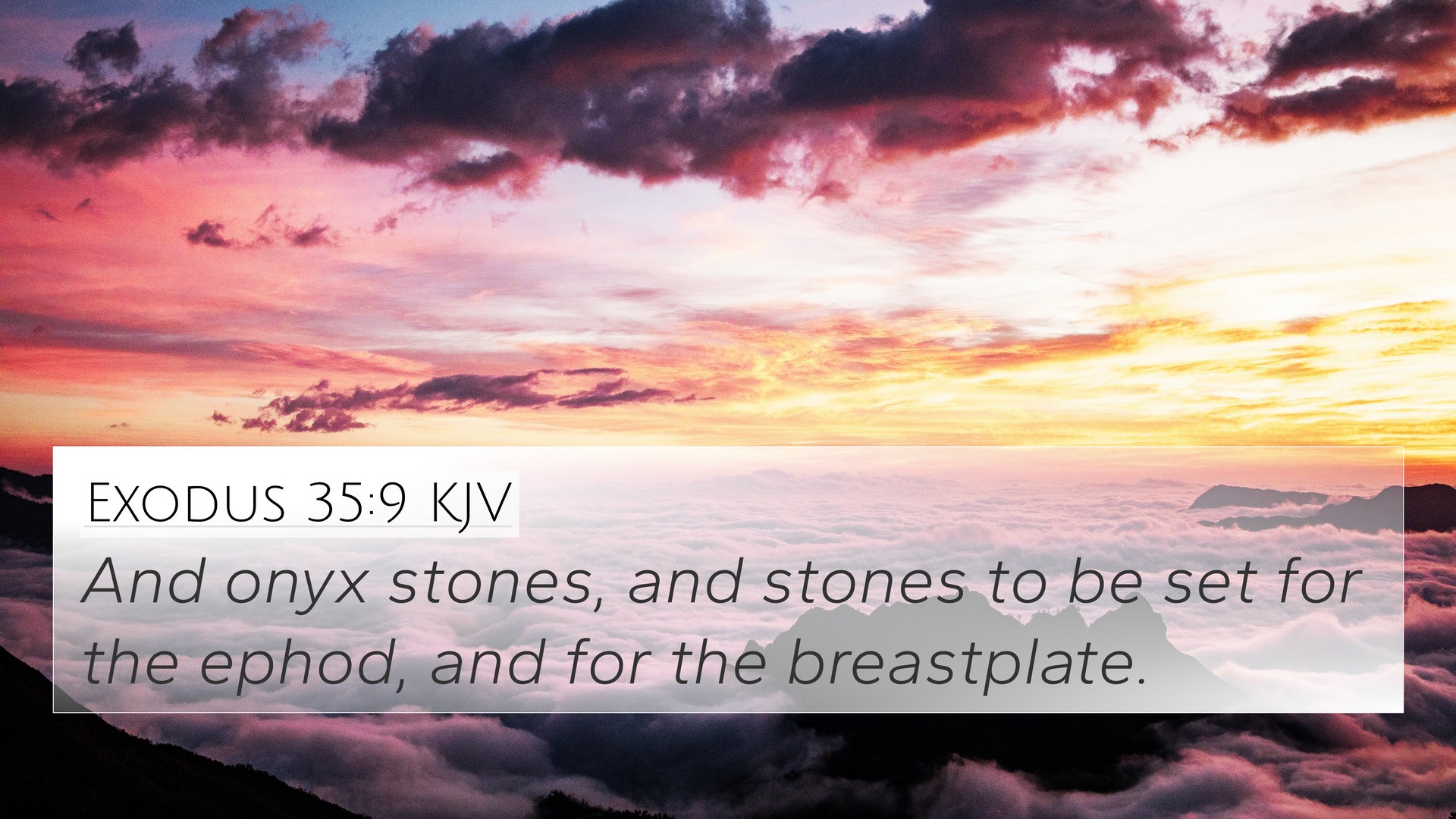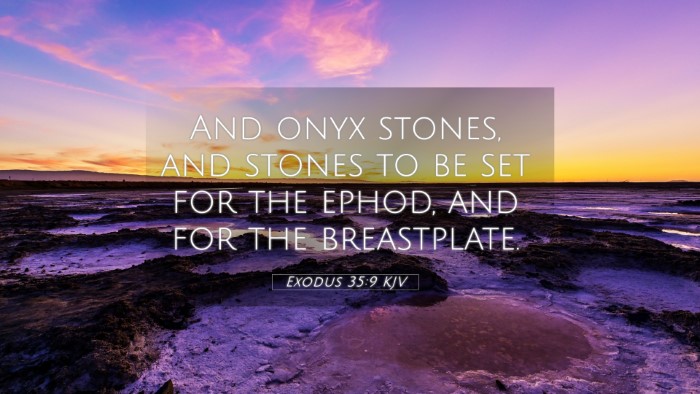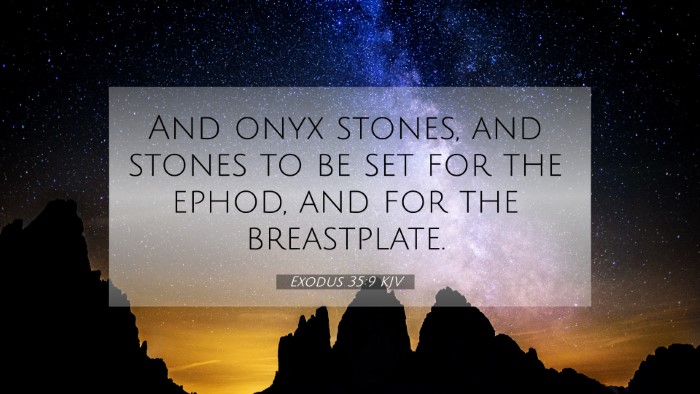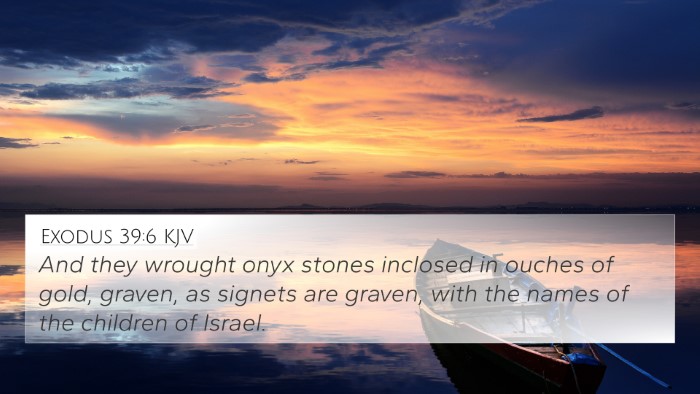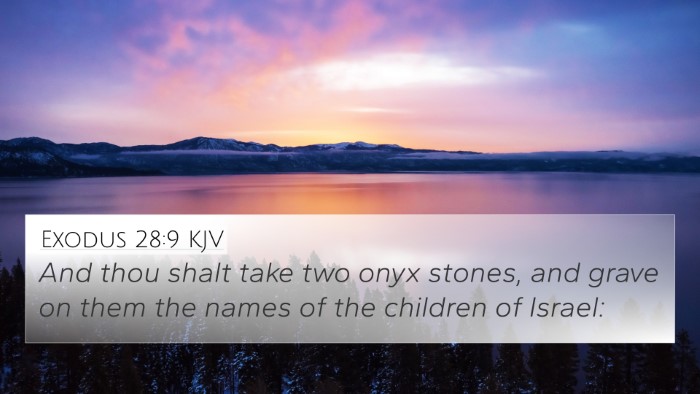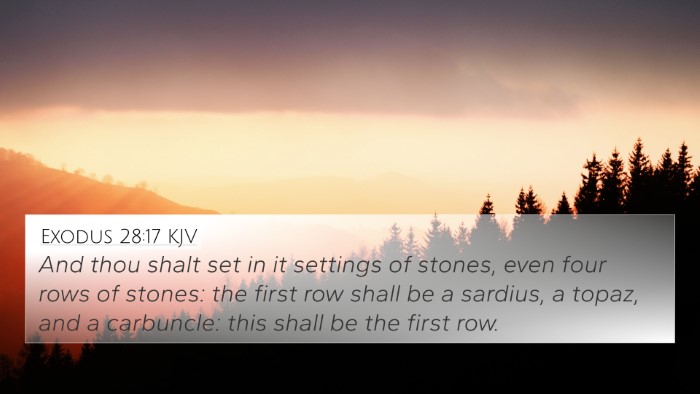Understanding Exodus 35:9
Exodus 35:9 states, “And the blue, and the purple, and the scarlet, and fine linen, and goats’ hair.” This verse is part of a larger context in which God instructs Moses regarding the materials for the construction of the tabernacle and its furnishings. The details emphasize the importance of beauty and the role these items will play in worship.
Contextual Overview
This verse is situated in a section of Exodus where God is giving specific instructions about the offerings for the tabernacle, a dwelling place for God's presence among His people. The mention of various materials showcases not just the aesthetics of worship, but the significance of dedicating valuable resources to God.
Theme and Significance
The principal themes found in Exodus 35:9 involve:
- Divine Instruction: God provides precise details indicating the importance of following His commands.
- Offering and Sacrifice: The community is called to contribute valuable goods for the service of worship.
- Holiness of Worship: The materials are symbols representing the care and reverence due in approaching God.
Connections Between Bible Verses
Exodus 35:9 relates to several other texts that echo similar themes of divine instruction, offering, and the building of sacred space:
- Exodus 25:1-2: Here, God commands Moses to speak to the Israelites to bring offerings for the sanctuary.
- Exodus 26:1: Details the construction of the tabernacle's curtains, specifying colors and types of fabric.
- Leviticus 23:2: Discusses appointed times of worship which require offerings.
- 1 Chronicles 29:3: David provides personal treasures for the temple, paralleling the concept of valuable offerings.
- Acts 2:44-45: Describes early Christians sharing their resources, reflecting community and sacrificial giving.
- Hebrews 9:1: Talks about the first covenant having regulations for divine worship, linking to the Old Testament practices.
- 2 Corinthians 9:7: Paul emphasizes cheerful giving, reminiscent of the heart behind the offerings in Exodus.
- Matthew 6:21: "For where your treasure is, there your heart will be also," indicating where we invest shows our priorities.
- 1 Peter 2:9: Describes believers as a royal priesthood, connecting the concept of dedicated service to God.
Comparative Bible Verse Analysis
Analyzing Exodus 35:9 in light of the connected verses reveals a broader narrative about worship and community involvement:
- Offering as Worship: Throughout scripture, offerings symbolize a physical manifestation of faith.
- Value of Community: The collective effort in gathering materials shows the importance of community in worship.
- Obedience to God’s Commands: The exact details signify God’s desire for reverence and order in worship practices.
Bible Cross-Referencing Tools
For further study, several tools can assist with Bible cross-referencing:
- Bible Concordance: A comprehensive list of words found in the Bible organized for easy reference.
- Bible Cross-Reference Guide: Books or online resources that connect related verses.
- Bible Reference Resources: Various academic tools and software available for deep Scripture study.
How to Use Bible Cross-References
Understanding how to effectively use Bible cross-references can enhance your study:
- Identify key themes in a verse and search for related scriptures.
- Use a Bible concordance to find occurrences of similar words and concepts.
- Consider the theological implications of the connected verses to gain broader insights.
Inter-Biblical Dialogue
Exodus 35:9 also opens avenues for inter-Biblical dialogue, showcasing continuity in God’s instructions between the Old and New Testaments:
- Fulfillment of the Law: As the temple structure evolves throughout scripture, the theme of dedicated worship continues.
- Community and Sacrifice: Similar principles of communal sacrifice can be found in the early church, as noted in Acts.
Conclusion
Exodus 35:9 serves as a pivotal verse that embodies the spirit of worship through community offering, divine instruction, and the beautiful preparation of a holy space for God’s presence. Cross-referencing this verse with related scriptures provides a richer understanding of worship's significance within the biblical narrative.
